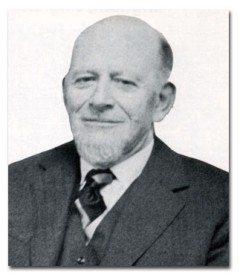Liberty Matters
Lachmann on Fundamental and Secondary Institutions

Lachmann's theory of institutions deserves more attention; it represents his attempt to solve the "Lachmann problem." Unfortunately, his meaning is obscure. Yet, as Lewin points out, our effort (Tulloh and Miller 2006) to clarify the meaning also requires further clarification.
Lachmann ([1950] 1977, 169) points to continuity of the social environment as a basis for plan coordination. He later (1971, 50) identifies institutions as the source of this continuity. But this creates a new problem: how does the institutional order maintains its coherence in the face of change? He proposes a distinction between "frequently mutable" secondary institutions and "almost immutable" fundamental institutions. Fundamental institutions are the rules of property and contract: "a market economy may adjust itself to changes of many kinds, but it rests unconditionally on the institutions of property and contract." (1971, 90) Secondary institutions "gradually evolve as a result of market processes and other forms of spontaneous individual action." (1971, 81)
Lachmann seems to be groping for the right words. He first distinguishes between external and internal institutions before shifting to fundamental and secondary. Secondary institutions are referred to in terms of "nodal points," "interstices," and "orientation schemes of the second order." Interestingly, software developers have developed a set of concepts to think about distinctions of this sort.
Programmers distinguish between two dimensions of abstraction -- abstraction layers (horizontal) and abstraction boundaries (vertical). Programming languages abstract from the details of the physical machine creating a layer where programmers can reason about the behavior of entities in terms of the rules of logic. Similarly, fundamental institutions abstract from the particular circumstances of time and place creating a layer of abstraction where actors can reason about the actions of others in terms of the rules of property and contract.
But what does it mean to say that secondary institutions create abstraction boundaries? Lachmann gives us a clue with "interstices" -- the space between two objects. In software, objects at the same layer of abstraction are separated by interfaces through which they interact. Lachmann recognizes that in a world of social cooperation based on specialization, most of the means we need to achieve our ends are controlled by others. The interface connects separately controlled means with separately defined ends. Agents don't plan based on the concrete means and ends of others but according to the abstract interfaces existing between them.
Let's compare a specific and abstract relationship. Claire wants to send a birthday card to her mom. Not being able to deliver it herself, she hopes to find someone who can. It turns out that Paul specializes in delivering birthday cards from Claire to Claire's mother. If they meet somehow, the plans are coordinated. Claire's purpose of sending her mom a birthday card is fulfilled by Paul's plan of delivering birthday cards from Claire to Claire's mom. But this relation is brittle; coordination only occurs in a specific circumstance. A slight variation and both plans fail. If Claire wants to send a birthday card to her sister, or if Paul only delivers birthday cards to Alice's mother, they are out of luck.
Abstraction overcomes this brittleness. The interface of posting a letter generalizes from the specifics circumstances of Claire: Birthday Card -- Claire's Mom, to an abstract interface: [Sender] – [Envelope] – [Address]. A post office will deliver any letter from anyone to any address. By creating an abstract interface rather than a specific one, a greater range of plans can be coordinated (including many not yet foreseen).
Note that the greater flexibility applies to both sides: the boundary coordinates a greater range of plans for sending letters and a greater range of plans for delivering them. We can now make sense of Lachmann when he writes "One is tempted to think of the institutional order as of an array of hinges: the institutions within each hinge can move a good deal, if within limits, but the hinges themselves cannot." (1979, 72)
I can now explain my discomfort with viewing Lachmann's institutions as rules of the game. Fundamental institutions define the rules of the game for actors at a level of abstraction. While it is possible to think of the interface as defining the rules for "the game of posting a letter," I think this obscures the role of abstraction in coordinating plans between actors. Lachmann's great insight was to recognize that this process of creating secondary institutions is a crucial part of the market process; the creation of abstract interfaces is an endogenous part of the interplay between entrepreneurs and their customers.
Copyright and Fair Use Statement
“Liberty Matters” is the copyright of Liberty Fund, Inc. This material is put on line to further the educational goals of Liberty Fund, Inc. These essays and responses may be quoted and otherwise used under “fair use” provisions for educational and academic purposes. To reprint these essays in course booklets requires the prior permission of Liberty Fund, Inc. Please contact oll@libertyfund.org if you have any questions.